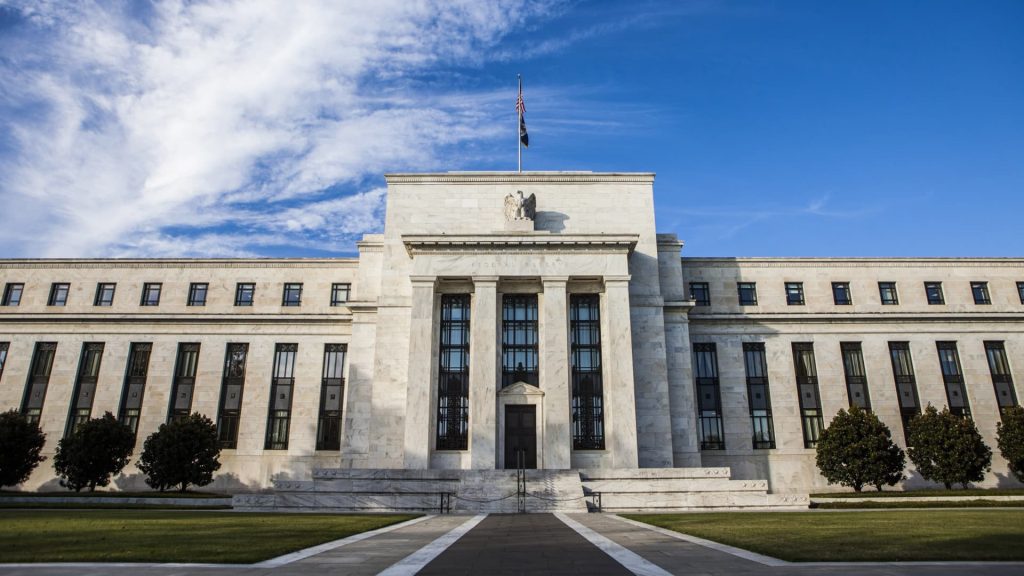The Federal Reserve is expected to hold interest rates steady at the end of its two-day meeting next week, despite President Donald Trump’s comments on Thursday that he’ll “demand that interest rates drop immediately.”
So far, the central bank has moved slowly to recalibrate policy after hiking its key benchmark 5.25 percentage points between 2022 and 2023 in an effort to fight inflation, which is still running above the Fed’s 2% mandate. On the campaign trail, Trump said that inflation and high interest rates are “destroying our country.”
But for consumers struggling under the weight of high prices and high borrowing costs, there is little relief in sight, for now.
“Anyone hoping for the Fed to ride in as the cavalry and rescue you from high interest rates anytime soon is going to be really disappointed,” said Matt Schulz, LendingTree’s chief credit analyst.
More from Personal Finance:
IRS announces the start of the 2025 tax season
What the Trump administration could mean for your money
Now is an ‘ideal time’ to reassess your retirement savings
The Federal funds rate, which the U.S. central bank sets, is the rate at which banks borrow and lend to one another overnight. Although that’s not the rate consumers pay, the Fed’s moves still affect the borrowing and savings rates consumers see every day.
Once the Fed funds rate eventually comes down, consumers may see their borrowing costs decrease across various loans like mortgages, car loans and credit cards, making it cheaper to borrow money.
Here’s a breakdown of how it works:
Credit cards
Since most credit cards have a variable rate, there’s a direct connection to the Fed’s benchmark. But even though the central bank cut its benchmark interest rate by a full percentage point last year, credit card costs remained elevated.
Card issuers are often slower to respond to Fed rate decreases than to increases, said Greg McBride, Bankrate’s chief financial analyst.
Currently, the average credit card rate is more than 20%, according to Bankrate — near an all-time high.
In the meantime, delinquencies are higher and the share of credit card holders making only minimum payments on their bills recently jumped to a 12-year high, according to a Philadelphia Federal Reserve report.
“That means it is maybe more important than ever to get that high-interest debt under control,” Schulz said.
Mortgage rates
Mortgage rates have risen in recent months, even as the Fed cut rates.
Because 15- and 30-year mortgage rates are fixed and mostly tied to Treasury yields and the economy, they are not falling in step with Fed policy. Since most people have fixed-rate mortgages, their rate won’t change unless they refinance or sell their current home and buy another property.
“Most mortgage debt is fixed, so existing homeowners are not impacted,” Bankrate’s McBride said. “It just adds to the affordability woes for would-be homebuyers and is keeping home sales on ice.”
The average rate for a 30-year, fixed-rate mortgage is now 7.06%, according to Bankrate.
Auto loans
Auto loan rates are fixed. But these debts are one of the fastest growing sources of consumer credit outside of mortgage lending. Payments have been getting bigger because car prices are rising, driving outstanding auto loan balances to more than $1.64 trillion.
The average rate on a five-year new car loan is now around 7.47%, according to Bankrate.
“With the Fed signaling that any rate cuts in 2025 will be gradual, affordability challenges are likely to persist for most new vehicle buyers,” said Joseph Yoon, Edmunds’ consumer insights analyst.
“Although further rate cuts in 2025 could provide some relief, the continued upward trend in new vehicle pricing makes it difficult to anticipate significant improvements in affordability for consumers in the new year,” Yoon said.
Student loans
Federal student loan rates are also fixed, so most borrowers aren’t immediately affected by any Fed moves.
However, undergraduate students who took out direct federal student loans for the 2024-25 academic year are paying 6.53%, up from 5.50% in 2023-24. Interest rates for the upcoming school year will be based in part on the May auction of the 10-year Treasury note.
Private student loans tend to have a variable rate tied to the prime, Treasury bill or another rate index, which means those borrowers are typically paying more in interest. How much more, however, varies with the benchmark.
Savings rates
While the central bank has no direct influence on deposit rates, the yields tend to be correlated to changes in the target federal funds rate.
As a result of the Fed’s string of rate hikes in recent years, top-yielding online savings accounts have offered the best returns in more than a decade and still pay nearly 5%, according to McBride.
“The good thing about the Fed being on the sidelines is that savers are going to be able to enjoy these inflation-beating yields for some time to come,” McBride said.

